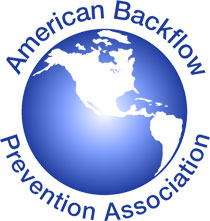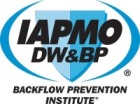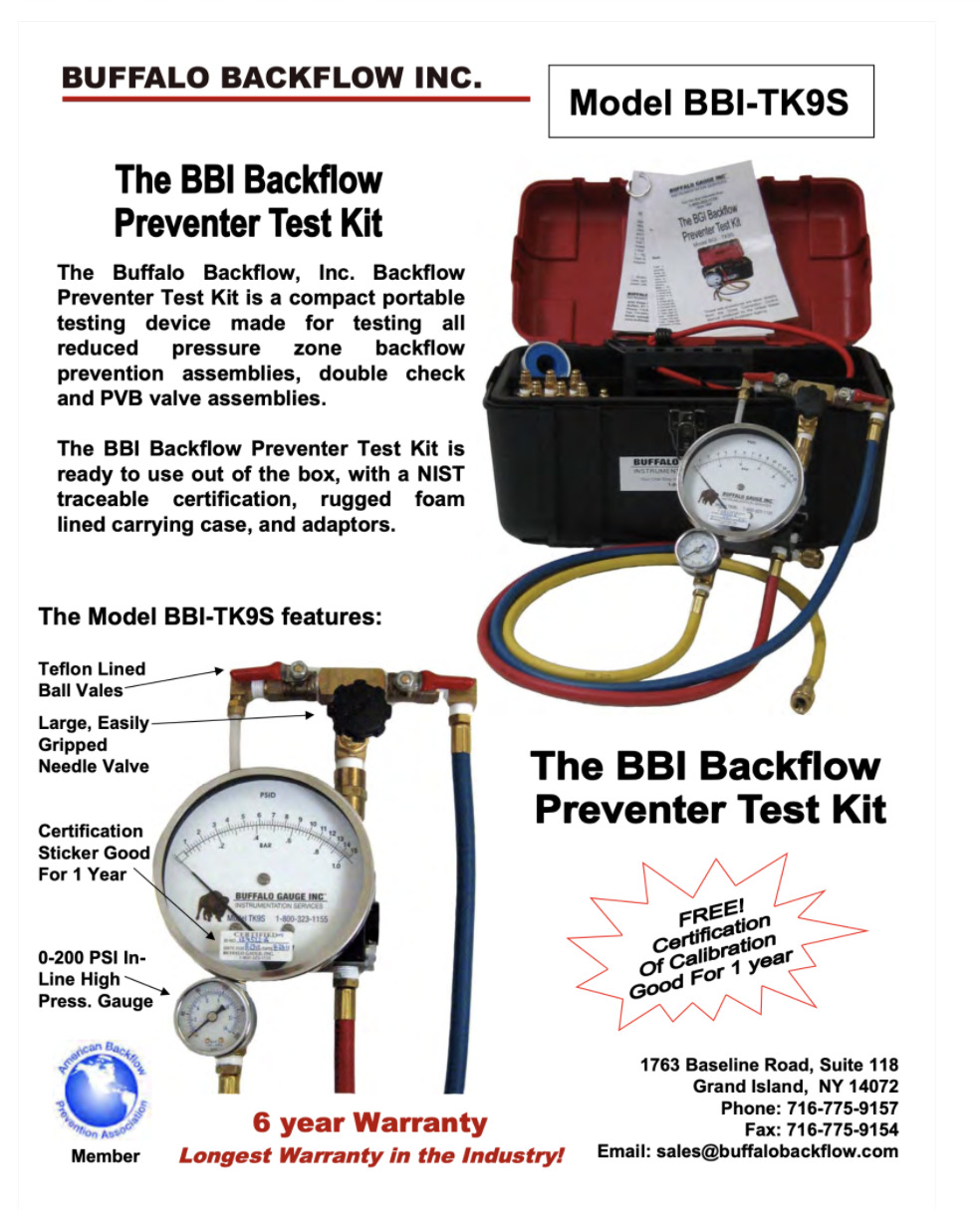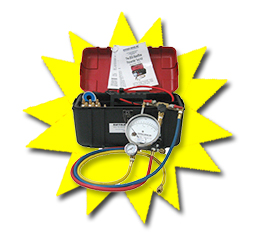There is a growing need for persons qualified to inspect, test and repair for backflow test kit certification prevention devices. Backflow devices must be tested upon installation, after repairs and annually.
Individuals who install, repair or test backflow preventers include:
- Licensed Plumbers
- Plumbers Journeymen
- Fire Sprinkler Contractors
- Lawn Sprinkler Contractors
- Water Company Officials
- Employees
We feel the following websites are very good resources for further information regarding Backflow Cross Connection Test Kit Prevention, Certification, and Regulation.
ASSOCIATIONS
American Backflow Prevention Association (ABPA)
Buffalo Backflow is a member of this international organization that involves all people in protecting public health by protecting the drinking water through cross connection test kit control and backflow prevention.
IAPMO Backflow Prevention Institute
The motto of the Backflow Prevention Institute® is safe water through plumbing code compliance. Proper training and certification are the keys to achieving that goal. IAPMO’s Backflow Prevention Institute is the industry’s resource for backflow prevention and cross-connection control. It provides professional training exceeding the industry standards established by the American Society of Sanitary Engineering.
National Rural Water Association
National Rural Water Association through its State Rural Water affiliates is the nation’s largest water and wastewater utility membership association with over 31,000 members.
What is Backflow?
Backflow is the undesirable reversal of the flow of water or mixtures of water and other undesirable substances from any source (such as used water, industrial fluids, gasses, or any substance other than the intended potable water) into the distribution pipes of the potable water system. Backflow occurs as a result of a “cross-connection” within the water system, which exists when there is any actual or potential connection between a potable water system and any other source or system through which it is possible to introduce into the potable system any used water or other substance.
There are many instances of cross-connection hazard. To explain the risk involved, imagine that one end of a garden hose is attached to your home’s water system and the other end is placed down into a bucket of herbicide. At the same time, an abrupt loss of water occurs in the main water line serving your home (such as a water main break or large volumes of water released from a fire hydrant). The pressure drop causes a reverse flow in the water line and in a system with no backflow prevention insecticide from the bucket is sucked into your home’s drinking water and potentially into the main water line serving your community. However, if the spigot your garden hose is connected to is equipped with a hose bib device, the reverse flow would cause the check in the hose bib to engage and stop the backflow at the spigot. If there is no hose bib or if it is not operating properly, the backflow prevention assembly installed between your home and the main water line would engage and prevent the herbicide from contaminating the main water line.
The need for cross-connection control exists in all types of premises, whether industrial or residential. Backflow prevention devices help protect the public safety by preventing potable water contamination in such critical areas as municipal water systems, food processing plants, medical and dental water supplies, and many industrial applications. The Safe Drinking Water Act, signed into law in 1974, placed the responsibility of local governments and water authorities for drinking water protection.





